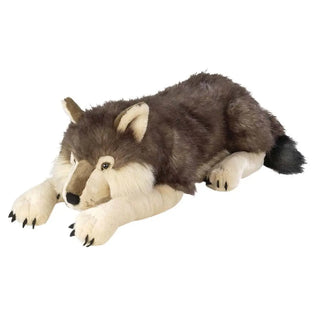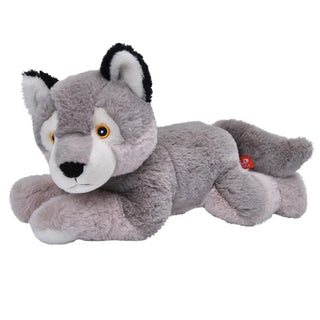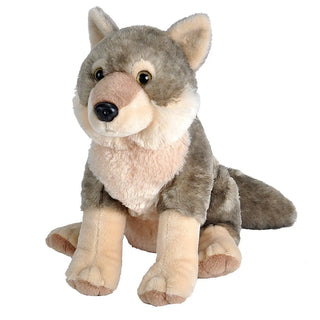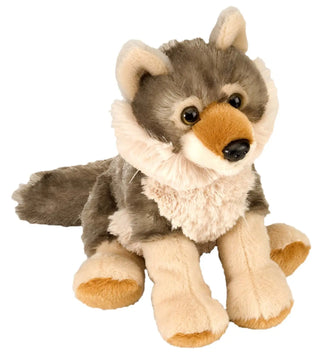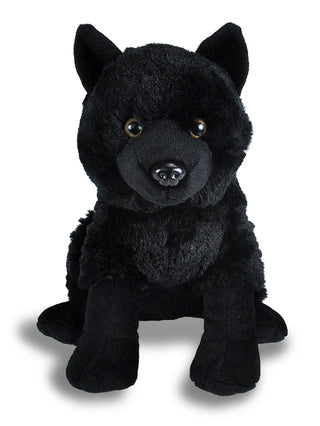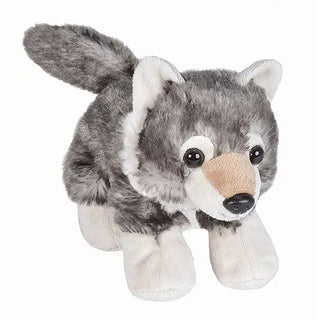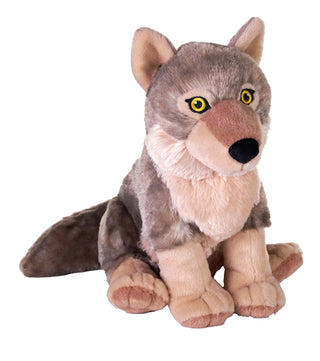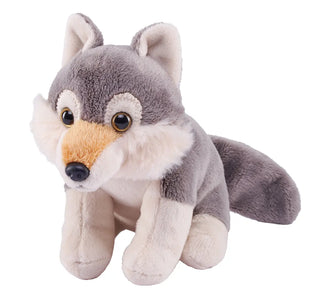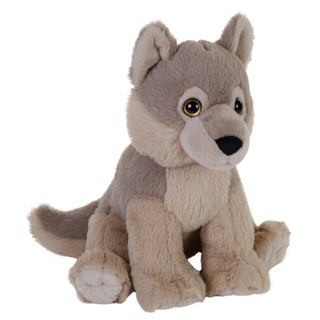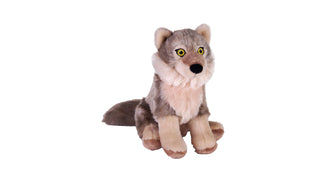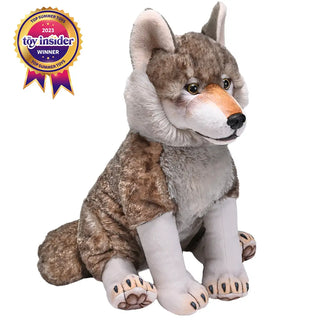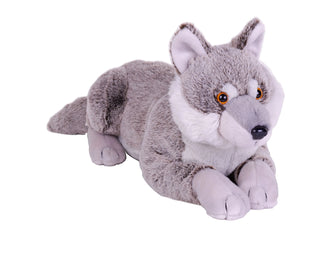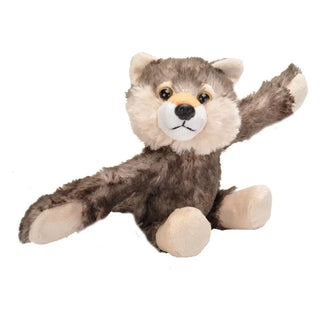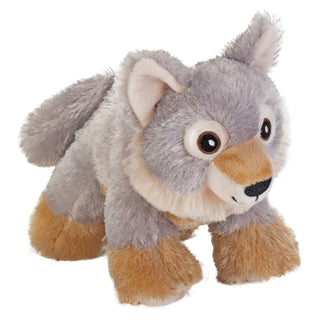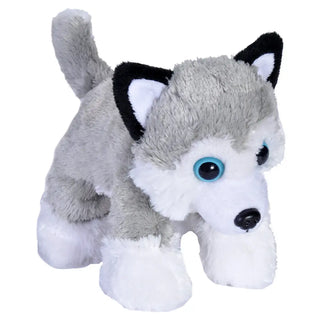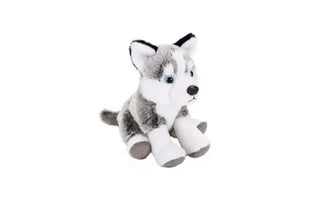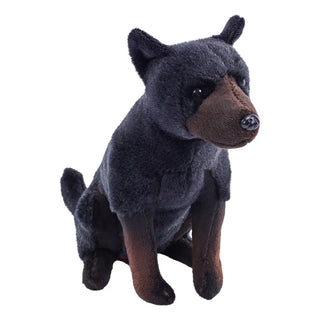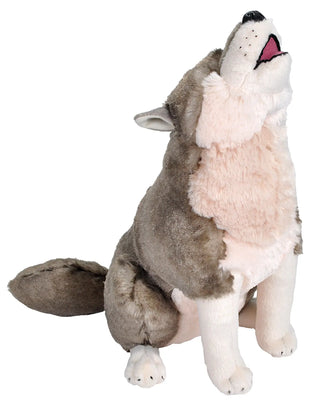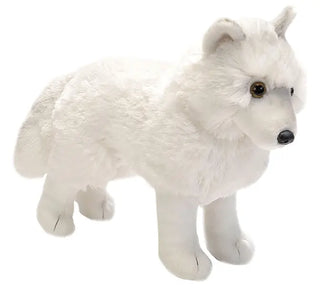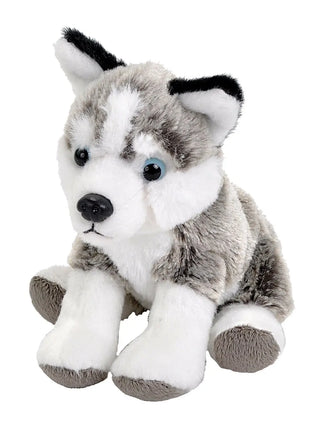Your Search For "wolf" Revealed The Following:
Filter
Active Filters
Wolf Stuffed Animal - 30"
Regular price
$63.20
$78.99
Save 20%
- Unit price
- / per
INCLUDES:
- Age:0+
- AnimalType:Wolf
- Brand:Cuddlekins
- Gender:Boy
- Gender:Girl
- Size:30"
- Wolf
Regular price
$63.20
$78.99
Save 20%
- Unit price
- / per
Wolf Ecokins
$19.99
- Unit price
- / per
INCLUDES:
- Age:0+
- AnimalType:Wolf
- Brand:Ecokins
- Gender:Boy
- Gender:Girl
- Wolf
$19.99
- Unit price
- / per
Wolf Stuffed Animal - 12"
$22.99
- Unit price
- / per
INCLUDES:
- Age:0+
- AnimalType:Wolf
- Brand:Cuddlekins
- Gender:Boy
- Gender:Girl
- Size:12"
- Wolf
$22.99
- Unit price
- / per
Wolf Stuffed Animal - 8"
$12.99
- Unit price
- / per
INCLUDES:
- Age:0+
- AnimalType:Wolf
- Brand:Cuddlekins
- Gender:Boy
- Gender:Girl
- Size:8"
- Wolf
$12.99
- Unit price
- / per
Black Wolf Stuffed Animal - 12"
$22.99
- Unit price
- / per
INCLUDES:
- Age:0+
- AnimalType:Wolf
- Brand:Cuddlekins
- Gender:Boy
- Gender:Girl
- Size:12"
- Wolf
$22.99
- Unit price
- / per
Wolf Stuffed Animal - 7"
$9.99
- Unit price
- / per
INCLUDES:
- Age:0+
- AnimalType:Wolf
- Brand:Hug'ems
- Easter
- Gender:Boy
- Gender:Girl
- Size:7"
- Wolf
$9.99
- Unit price
- / per
Wild Calls Wolf - 8"
$14.99
- Unit price
- / per
INCLUDES:
- Age:0+
- AnimalType:Wolf
- Brand:Wild Calls
- Features:With Sound
- Gender:Boy
- Gender:Girl
- Size:8"
- Wolf
$14.99
- Unit price
- / per
Cuddlekins Eco Wolf Stuffed Animal - 12"
$24.99
- Unit price
- / per
INCLUDES:
- Age:0+
- Brand:Cuddlekins Eco
- Features:Eco
- Gender:Boy
- Gender:Girl
- Size:12"
$24.99
- Unit price
- / per
Pocketkins Eco Wolf Stuffed Animal - 5"
$8.99
- Unit price
- / per
INCLUDES:
- Age:0+
- Brand:Pocketkins Eco
- Features:Eco
- Gender:Boy
- Gender:Girl
- Size:5"
$8.99
- Unit price
- / per
Earthkins Mini Wolf Stuffed Animal - 8"
Regular price
$17.60
$21.99
Save 20%
- Unit price
- / per
INCLUDES:
- Age:0+
- Brand:Earthkins Mini
- Gender:Boy
- Gender:Girl
- Size:8"
Regular price
$17.60
$21.99
Save 20%
- Unit price
- / per
Grey Wolf Pincher
$8.99
- Unit price
- / per
INCLUDES:
- Age:3+
- AnimalType:Wolf
- Brand:Pincher
- Gender:Boy
- Gender:Girl
- Size:18"
- Wolf
$8.99
- Unit price
- / per
Wolf Backpack - 14"
$29.99
- Unit price
- / per
INCLUDES:
- Age:4+
- AnimalType:Wolf
- Brand:Wild Republic Backpacks
- Gender:Boy
- Gender:Girl
- Wolf
$29.99
- Unit price
- / per
Cuddlekins Eco Wolf Stuffed Animal - 8"
$14.99
- Unit price
- / per
INCLUDES:
- Age:0+
- Brand:Cuddlekins Eco
- Features:Eco
- Gender:Boy
- Gender:Girl
- Size:8"
$14.99
- Unit price
- / per
Artist Collection - Wolf
$43.99
- Unit price
- / per
INCLUDES:
- Age:0+
- Brand:Artist Collection
- Gender:Boy
- Gender:Girl
- Size:15"
$43.99
- Unit price
- / per
Wolf Ecokins Mini
$11.99
- Unit price
- / per
INCLUDES:
- Age:0+
- AnimalType:Wolf
- Brand:Ecokins
- Gender:Boy
- Gender:Girl
- Wolf
$11.99
- Unit price
- / per
Earthkins Wolf Stuffed Animal - 15"
$40.99
- Unit price
- / per
INCLUDES:
- Age:0+
- Brand:Earthkins
- Gender:Boy
- Gender:Girl
- Size:15"
$40.99
- Unit price
- / per
Huggers Wolf Stuffed Animal - 8"
$10.99
- Unit price
- / per
INCLUDES:
- Age:10M+
- AnimalType:Wolf
- Brand:Huggers
- Easter
- Gender:Boy
- Gender:Girl
- Size:8"
- Wolf
$10.99
- Unit price
- / per
Ecofuzzies Wolf Stuffed Animal - 7"
$14.99
- Unit price
- / per
INCLUDES:
- Age:0+
- Brand:Ecofuzzies
- Gender:Boy
- Gender:Girl
- Size:7"
$14.99
- Unit price
- / per
Little Biggies Wolf Stuffed Animal - 30"
Regular price
$96.80
$120.99
Save 20%
- Unit price
- / per
INCLUDES:
- Age:0+
- AnimalType:Wolf
- Brand:Little Biggies
- Gender:Boy
- Gender:Girl
- Size:30"
- Wolf
Regular price
$96.80
$120.99
Save 20%
- Unit price
- / per
Rainforest Splendors Wolf’s Mona Monkey Stuffed Animal - 6"
$14.99
- Unit price
- / per
INCLUDES:
- Age:0+
- Brand:Rainforest Splendors
- CMTBT
- Gender:Boy
- Gender:Girl
- Size:6"
$14.99
- Unit price
- / per
Ecokins Hanging Wolf’s Mona Monkey Stuffed Animal - 22"
$15.99
- Unit price
- / per
INCLUDES:
- Age:0+
- Brand:Ecokins Hanging
- Gender:Boy
- Gender:Girl
- Size:22"
$15.99
- Unit price
- / per
Husky Stuffed Animal - 7"
$9.99
- Unit price
- / per
INCLUDES:
- Age:0+
- AnimalType:Siberian Husky
- Brand:Hug'ems
- Easter
- Gender:Boy
- Gender:Girl
- Siberian Husky
- Size:7"
$9.99
- Unit price
- / per
Husky Stuffed Animal - 12"
$22.99
- Unit price
- / per
INCLUDES:
- Age:0+
- AnimalType:Dog
- Brand:Cuddlekins
- Dog
- Gender:Boy
- Gender:Girl
- Size:12"
$22.99
- Unit price
- / per
Rescue Dog - Kelpie
Regular price
$11.20
$13.99
Save 20%
- Unit price
- / per
INCLUDES:
- Age:0+
- Brand:Rescue Dogs
- Features:With Sound
- Gender:Boy
- Gender:Girl
- Size:5.5"
Regular price
$11.20
$13.99
Save 20%
- Unit price
- / per
The Hidden Woodlands Trail Bundle
Regular price
$57.99
$64.95
Save 11%
- Unit price
- / per
INCLUDES:
- Cuddlekins Mini Black Bear 8"
- Ecokins Wolf 12"
- Flipkins Raccoon 5"
- Hug'Ems Mini Red Panda 7"
- Huggers Red Fox 8"
Regular price
$57.99
$64.95
Save 11%
- Unit price
- / per
Howling Wolf Stuffed Animal - 25"
Regular price
$81.60
$101.99
Save 20%
- Unit price
- / per
INCLUDES:
- Age:0+
- AnimalType:Wolf
- Brand:Little Biggies
- Gender:Boy
- Gender:Girl
- Size:25"
- Wolf
Regular price
$81.60
$101.99
Save 20%
- Unit price
- / per
Howling Wolf Stuffed Animal - 6"
$13.99
- Unit price
- / per
INCLUDES:
- Age:0+
- AnimalType:Wolf
- Brand:Splendors
- Gender:Boy
- Gender:Girl
- Size:6"
- Wolf
$13.99
- Unit price
- / per
Standing Arctic Wolf Stuffed Animal - 12"
$22.99
- Unit price
- / per
INCLUDES:
- Age:0+
- AnimalType:Arctic Wolf
- Arctic Wolf
- Brand:Cuddlekins
- Gender:Boy
- Gender:Girl
- Size:12"
$22.99
- Unit price
- / per
Wild Calls Wolf Puppet 12"
$17.99
- Unit price
- / per
INCLUDES:
- Age:0+
- Brand:Wild Calls Puppet
- Features:With Sound
- Gender:Boy
- Gender:Girl
- Size:12"
$17.99
- Unit price
- / per
Pocketkins Eco Husky Stuffed Animal - 5"
$8.99
- Unit price
- / per
INCLUDES:
- Age:0+
- Brand:Pocketkins Eco
- Features:Eco
- Gender:Boy
- Gender:Girl
- Size:5"
$8.99
- Unit price
- / per
You're viewing 1-30 of 30 results

